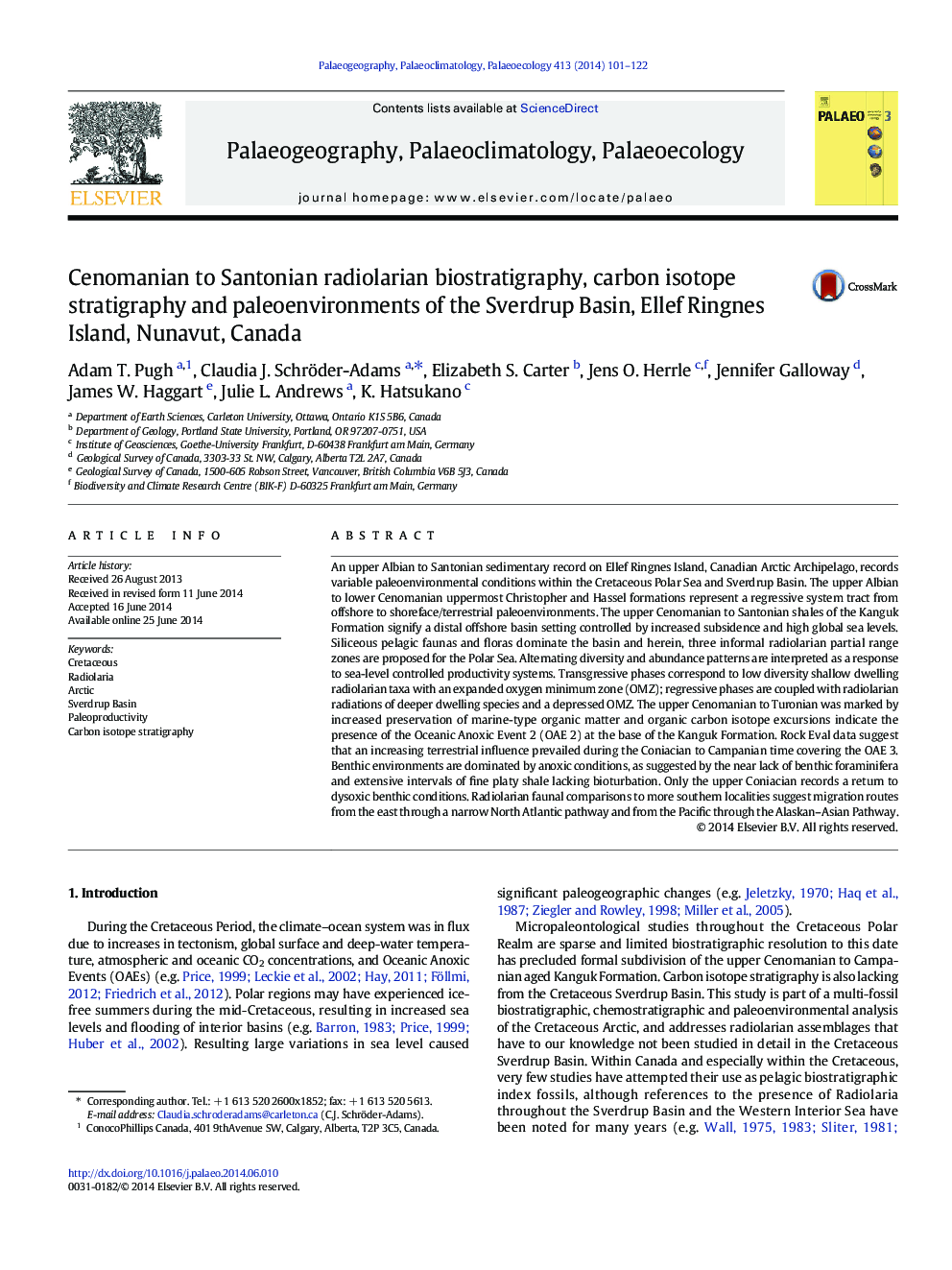| کد مقاله | کد نشریه | سال انتشار | مقاله انگلیسی | نسخه تمام متن |
|---|---|---|---|---|
| 4466148 | 1622177 | 2014 | 22 صفحه PDF | دانلود رایگان |
• Cenomanian to Santonian radiolarian biostratigraphy of the Sverdrup Basin.
• Carbon isotope record for the Upper Cretaceous Sverdrup Basin OAE 2 is detected at the base of the Kanguk Formation in the High Arctic.
• Marine productivity signals correlated to transgressive/regressive cycles.
• Facies analysis of Hassel and Kanguk formations are presented.
An upper Albian to Santonian sedimentary record on Ellef Ringnes Island, Canadian Arctic Archipelago, records variable paleoenvironmental conditions within the Cretaceous Polar Sea and Sverdrup Basin. The upper Albian to lower Cenomanian uppermost Christopher and Hassel formations represent a regressive system tract from offshore to shoreface/terrestrial paleoenvironments. The upper Cenomanian to Santonian shales of the Kanguk Formation signify a distal offshore basin setting controlled by increased subsidence and high global sea levels. Siliceous pelagic faunas and floras dominate the basin and herein, three informal radiolarian partial range zones are proposed for the Polar Sea. Alternating diversity and abundance patterns are interpreted as a response to sea-level controlled productivity systems. Transgressive phases correspond to low diversity shallow dwelling radiolarian taxa with an expanded oxygen minimum zone (OMZ); regressive phases are coupled with radiolarian radiations of deeper dwelling species and a depressed OMZ. The upper Cenomanian to Turonian was marked by increased preservation of marine-type organic matter and organic carbon isotope excursions indicate the presence of the Oceanic Anoxic Event 2 (OAE 2) at the base of the Kanguk Formation. Rock Eval data suggest that an increasing terrestrial influence prevailed during the Coniacian to Campanian time covering the OAE 3. Benthic environments are dominated by anoxic conditions, as suggested by the near lack of benthic foraminifera and extensive intervals of fine platy shale lacking bioturbation. Only the upper Coniacian records a return to dysoxic benthic conditions. Radiolarian faunal comparisons to more southern localities suggest migration routes from the east through a narrow North Atlantic pathway and from the Pacific through the Alaskan–Asian Pathway.
Journal: Palaeogeography, Palaeoclimatology, Palaeoecology - Volume 413, 1 November 2014, Pages 101–122
